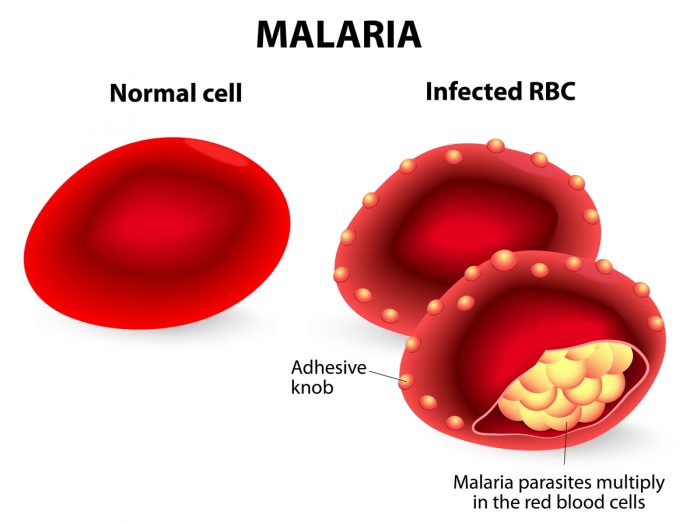Typhoid
can be a deadly and difficult affliction for many people around the
world, so understanding the symptoms and treatment is crucial, including
remedies like
cloves,
garlic,
ginger, cranberries,
lemon,
raisins,
honey and increasing fluid levels, among others.
Table of Contents
- Typhoid Symptoms
- Typhoid Treatments
Typhoid Symptoms
More formally known as typhoid
fever, this serious health condition is caused by an infection of the
Salmonella Typhi
bacterium. While typhoid has largely been eliminated in major western
countries through the application of a vaccine, typhoid still rages
through certain parts of the world, with more than
10 million new cases
reported every year. In many cases, typhoid fever can be treated,
reducing the mortality rate to below 5%, but if untreated, the mortality
rate can rise as high as 20%. One of the most challenging parts of
diagnosing typhoid fever is the delay in appearance of symptoms. You can
see the first signs of typhoid anywhere from 6-30 days after exposure
to the bacteria.
A mild fever can slowly grow and worsen over the course of a few days, accompanied by tiredness,
headaches, weakness, stomach distress, nausea or vomiting. In some cases, patients also see a small
skin rash of rose-colored spots. A
loss
of appetite, a dry cough and sweating are also commonly reported. In
the second week of the infection, the fever remains very high and can
often lead to confusion or cognitive agitation, or even delirium. By the
third week, if left untreated, certain organs become inflamed, such as
the liver and spleen, and gastric distress is at its worst.
Diarrhea
is common, internal bleeding is a much greater risk, delirium will
worsen, and the abdomen will feel distended. Given that the symptoms
often worsen to serious levels, it is essential to diagnose and begin
treatment of typhoid fever as early as possible. The other
difficult aspect
of typhoid fever is that some people can be carriers without showing
any signs, yet still pass along the infection to others, so containment
can be difficult. Now, since typhoid has been a scourge of human
populations for thousands of years, there are many viable treatment
options available, many of which are explained below.

Typhoid Treatments
Treatments for Typhoid are as follows:
Garlic
As
with so many other infections, particularly those that affect the
stomach and gastrointestinal system in such a serious way, garlic is an
excellent natural remedy for
typhoid fever. The powerful active ingredient in garlic, allicin, works
as an antioxidant to eliminate the underlying infection caused by the
Salmonella
bacterium and strengthens the immune system in its vulnerable time of
need. Eating 1-2 clovers of garlic per day can be a quick and simple
solution to effectively ward off typhoid.
Ginger
Few
people think of ginger as a natural health remedy, but it can have a
number of stimulating effects on the body, including a boost to the
liver, which can help to
detoxify the body
and reduce the strain on the immune system. Furthermore, ginger
possesses gingerol, another powerful antioxidant that has antibacterial
properties, helping it eliminate the basic infection causing typhoid.
Ginger can be eaten raw, drunk as a
tea, pressed for the juice, or used in various culinary preparations.
Orange
The rich
vitamin C
content of oranges makes them a very important part of the immune
system’s fight against infections. Vitamin C acts as an antioxidant and
stimulates the
production of white blood cells,
which are the body’s first line of defense against infections and
foreign pathogens. Oranges are also good at soothing stomach upset and
promoting normal
digestion, as well as rapid
healing once the infection has been eliminated.
Raisins
One
of the most debilitating parts of typhoid fever is the savage attack it
can mount on your stomach and gastrointestinal system. Ranging from
severe diarrhea to unstoppable
constipation, your
gut takes a beating
when you’re infected. Raisins can help to regulate the bowels, and bulk
up stool to eliminate symptoms of diarrhea. Raisins are also rich,
concentrated sources of important
minerals, and can help to lower fever and counter other typhoid symptoms.
Honey
Arguably
the most concentrated form of nutrients and delicious flavor that you
can add to your diet, honey is great for countering typhoid fever. It
can give you a
quick energy boost
when you’re feeling exhausted, settle your stomach, and even counter
the bacterial infection itself. Mix at least a tablespoon of honey with a
glass of water or
milk and
drink it 2 times per day for relief.
Fluids
Whenever
you are fighting through an infection, your body is likely to become
dehydrated, as a fever is one of the most common symptoms of a bacterial
infection. When it comes to typhoid fever, this is particularly true,
but your body needs water to fight off the illness! Therefore, you must
drink far more fluids
than usual to compensate for the fluids you are losing in diarrhea and
sweat, while giving your body the resources it needs to fight.
Lemon
The
reason that so many cleaning products smell like lemon is because it is
a natural sanitizing agent. It can counter the effects of the bacteria
that causes typhoid, and also
clean out your stomach, alkalizing it and preventing the worst symptoms of typhoid, such as diarrhea and constipation.
Basil
This important
herb
is useful in the treatment of typhoid because it is an
anti-inflammatory agent that can reduce fevers, while also soothing your
stomach and
giving your immune system a boost.
Moreover, it is antibiotic and antibacterial in nature, so it can help
to eliminate the underlying infection causing your symptoms.
Echinacea
You can find dried
echinacea powder or the flowers themselves in many health
foods stores, and due to the antibacterial and anti-inflammatory
properties of this plant,
you should definitely pick some up. Steeping the powder or flower roots
as a tea can be a quick and effective way to lower your fever and
strengthen your immune system to counter the symptoms and root cause.
Bananas
Potassium
is an essential mineral in the body, particularly if we are suffering
from an infection that dehydrates us. Potassium controls much of the
fluid balance in the body, which is crucial while
fighting an illness. Potassium can also lower blood pressure and reduce fevers caused by typhoid fever.
Psyllium Seeds
The gastrointestinal symptoms of typhoid fever are brutal, but
psyllium seeds have a legendary ability to regulate the bowels and normalize your gut. The
high levels of fiber in
psyllium seeds can completely eliminate diarrhea and reduce stomach
distress, which can lower the strain being put on your immune system.
A Final Word of Warning
As
mentioned earlier, when not treated, typhoid can be deadly, so seeing a
doctor when these types of symptoms arise is crucial. These natural
remedies should be seen as complementary remedies, and should only be
used after discussing them with your doctor, while seeking more formal
treatment approaches.




